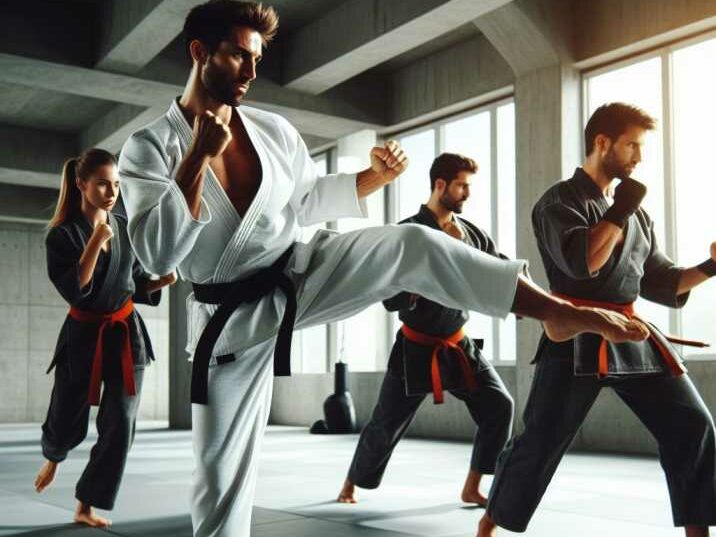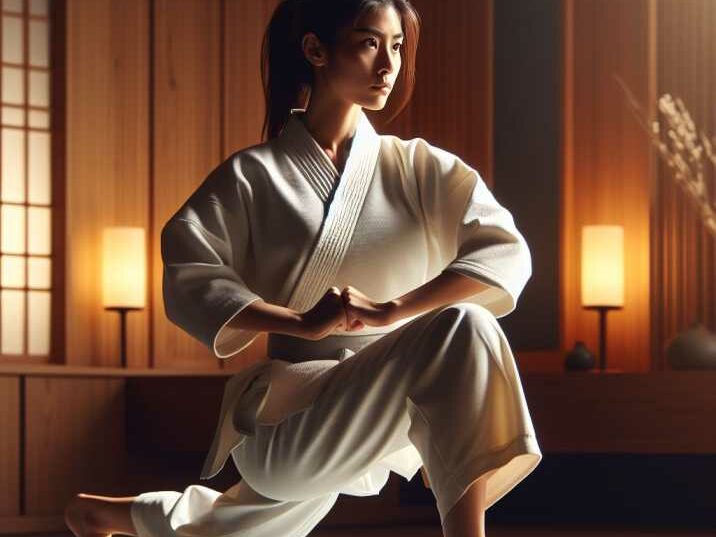Introduction:
Table of Contents
Martial arts have been practiced for centuries, not only for self-defense but also for physical fitness and mental discipline. With so many styles to choose from, it can be challenging to determine which is the best all-round martial arts option. In this guide, we’ll explore the various martial arts and identify the one that stands out as the most comprehensive for overall fitness and self-defense.
Table of Information:
- Introduction to Martial Arts
- Key Factors in Choosing the Best All-Round Martial Arts
- Comparison of Top Martial Arts Styles
- Karate
- Taekwondo
- Brazilian Jiu-Jitsu
- Muay Thai
- Mixed Martial Arts (MMA)
- Benefits of Practicing Martial Arts
- FAQs: Answering Common Questions
- Conclusion
1. Introduction to Martial Arts
Martial arts encompass a wide range of combat and self-defense techniques originating from various cultures around the world. These arts emphasize physical prowess, mental discipline, and self-control.
History and Evolution
The history of martial arts dates back thousands of years, with each style evolving from unique cultural and historical backgrounds. From the striking techniques of Karate to the grappling techniques of Judo, martial arts have continuously evolved and diversified.
Core Principles
While each martial art has its own set of techniques and philosophies, they often share common core principles such as respect, discipline, and perseverance. These principles are instilled in practitioners through rigorous training and adherence to tradition.
2. Key Factors in Choosing the Best All-Round Martial Arts
When choosing a martial art, several factors should be considered to ensure it aligns with your goals and preferences. These factors include:
Fitness Goals
Different martial arts emphasize different aspects of fitness, including strength, flexibility, cardiovascular endurance, and agility. Consider your fitness goals when selecting a martial art that suits your needs.
Self-Defense Skills
The effectiveness of a martial art in real-life self-defense situations is a crucial factor to consider. Look for a martial art that teaches practical techniques for defending against common threats and attacks.
Personal Preferences
Your personal preferences, such as preferred learning style, class atmosphere, and instructor personality, can greatly influence your enjoyment and success in practicing a martial art.
3. Comparison of Top Martial Arts Styles
Let’s delve into the characteristics of some of the most popular All-round martial arts styles to determine which one reigns supreme as the best all-round option.
Karate
Originating from Okinawa, Japan, Karate emphasizes striking techniques such as punches, kicks, and knee strikes. It promotes discipline, focus, and self-control through kata (forms) and kumite (sparring).
Taekwondo
Hailing from Korea, Taekwondo is known for its dynamic kicking techniques and acrobatic movements. It focuses on speed, agility, and precision, making it an excellent choice for cardiovascular fitness and flexibility.
Brazilian Jiu-Jitsu
Brazilian Jiu-Jitsu (BJJ) is a ground-based martial art that emphasizes leverage and technique over brute strength. It teaches practitioners how to control opponents and submit them using joint locks and chokeholds.

Muay Thai
Also known as the “Art of Eight Limbs,” Muay Thai originated in Thailand and utilizes punches, kicks, elbows, and knee strikes. It’s renowned for its effectiveness in stand-up striking and close-quarters combat.
Mixed Martial Arts (MMA)
MMA combines techniques from various martial arts disciplines, including striking, grappling, and submissions. It offers a well-rounded approach to combat sports and is widely regarded as one of the most effective forms of self-defense.
4. Benefits of Practicing Martial Arts
Engaging in martial arts training offers a multitude of physical, mental, and emotional benefits, including:
Physical Fitness
Martial arts training improves strength, flexibility, agility, and cardiovascular health, leading to overall physical well-being.
Self-Defense Skills
Learning practical self-defense techniques enhances confidence and empowers individuals to protect themselves and others in dangerous situations.
Mental Discipline
Martial arts instill discipline, focus, and perseverance, cultivating a strong mind-body connection and improving mental resilience.
Stress Relief
The physical exertion and mental focus required in martial arts training provide an excellent outlet for stress and tension, promoting relaxation and mental clarity.
5: Benefits of Practicing Martial Arts
Improved Coordination
Martial arts training enhances coordination and motor skills through precise movements and techniques. This improvement in coordination translates to better balance and agility in everyday activities.
Increased Confidence
As practitioners master new skills and overcome challenges in training, their self-confidence grows. Martial arts instill a sense of empowerment and self-assurance that extends beyond the dojo.
Cultivation of Discipline and Respect
Martial arts emphasize discipline, respect for oneself and others, and adherence to codes of conduct. These values are ingrained through rituals, traditions, and interactions within the martial arts community.
Stress Reduction and Mental Well-being
Engaging in martial arts training reduces stress and promotes mental well-being by releasing endorphins, improving mood, and providing a healthy outlet for emotions. The focus required during training also clears the mind of distractions, promoting mindfulness and relaxation.
Conclusion:
Choosing the best all-round martial arts involves considering various factors such as fitness goals, self-defense skills, and personal preferences. While each martial art offers unique benefits and challenges, Mixed Martial Arts (MMA) stands out as the ultimate choice for overall fitness, self-defense, and versatility. Whether you’re a beginner or an experienced practitioner, martial arts training can enrich your life physically, mentally, and emotionally. Embrace the journey and discover the transformative power of martial arts!

FAQs: Answering Common Questions
FAQ 1: Which martial art is best for beginners?
Answer: Karate and Taekwondo are excellent choices for beginners due to their structured curriculum and emphasis on foundational techniques.
FAQ 2: Is martial arts training suitable for children?
Answer: Yes, many martial arts schools offer classes specifically designed for children, focusing on discipline, respect, and self-confidence.
FAQ 3: Can I learn martial arts if I’m not very athletic?
Answer: Absolutely! Martial arts can be adapted to accommodate individuals of all fitness levels and abilities, and training can improve physical fitness over time.
FAQ 4: How long does it take to become proficient in a martial art?
Answer: The time it takes to become proficient varies depending on individual dedication, training frequency, and the complexity of the martial art. Generally, it takes several years of consistent practice to achieve mastery.
FAQ 5: Are there any age restrictions for learning martial arts?
Answer: No, martial arts are suitable for people of all ages, from young children to seniors. It’s never too late to start your martial arts journey and reap the benefits of training.


